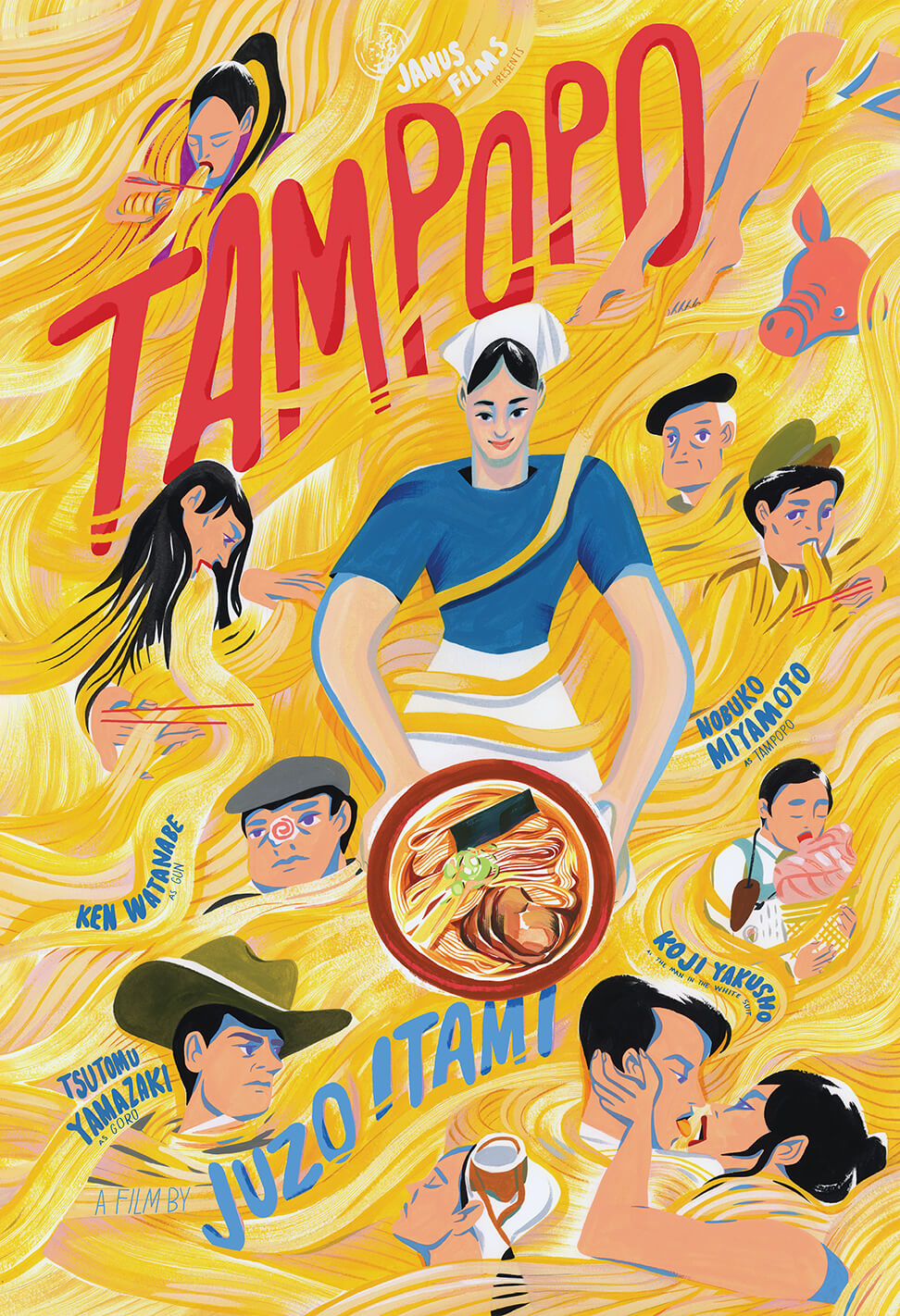‘Tampopo’, the Pioneering ‘Ramen Western’
A food-erotica comedy, this 1985 cult film is the first (and only) self-proclaimed representative of a genre inspired by Italian westerns.

Poster for ‘Tampopo’ Theatrical Release - Janus Films
Released in 1985, this second feature film from Juzo Itami is a ‘ramen western’, alluding to the famous ‘spaghetti westerns’, films made in Italy, of which one of the most iconic representatives is Sergio Leone.
This film is considered as a food-erotica comedy of sorts. It contains western elements, violence, spying and zany stories, the latter often being linked to food (for example the woman who goes around fondling fruit and cheese in a supermarket, and the couple whose bedroom antics feature eggs).
In search of the perfect noodles
The heroine, Tampopo, is a young widow who runs a noodle soup (ramen) restaurant in a working-class neighbourhood in Tokyo, where she meets Goro, a trucker who looks like a cowboy. Goro finds that Tampopo’s ramen is ‘missing something’. The pair decide to set out on a culinary quest, the aim of which is to find the perfect noodle recipe.
Humorous and satirical, the film nevertheless maintains a deeply respectful attitude towards food. Tampopo was restored and re-released in cinemas in 2016. It’s a film that’s ideal to (re)watch while enjoying a bowl of Japanese noodle soup.
Tampopo (1985), a movie directed by Juzo Itami and released on DVD and blu-ray by The Criterion Collection.

© ‘Tampopo’ - Films Sans Frontières

© ‘Tampopo’ - Films Sans Frontières

© ‘Tampopo’ - Films Sans Frontières

© ‘Tampopo’ - Films Sans Frontières

© ‘Tampopo’ - Films Sans Frontières

© ‘Tampopo’ - Films Sans Frontières

© ‘Tampopo’ - Films Sans Frontières

© ‘Tampopo’ - Films Sans Frontières

© ‘Tampopo’ - Films Sans Frontières
TRENDING
-
The Tattoos that Marked the Criminals of the Edo Period
Traditional tattoos were strong signifiers; murderers had head tattoos, while theft might result in an arm tattoo.

-
Paris, Tokyo: Robert Compagnon
With his co-chef and talented wife, Jessica Yang, Robert Compagnon opened one of the top new restaurants in Paris: Le Rigmarole.
 3:31
3:31 -
Chiharu Shiota, Red Threads of the Soul
Last year, more than 660,000 people visited the retrospective 'Chiharu Shiota: The Soul Trembles' exhibit at the Mori Art Museum.

-
‘Before Doubting Others, Doubt Yourself. Who Can Truly Say a Dish Isn’t What It Used to Be?’
In ‘A Non-Conformist’s Guide to Surviving Society’, author Satoshi Ogawa shares his strategies for navigating everyday life.

-
The Story of Sada Yacco, the Geisha who Bewitched Europe
Described by Dazed magazine as the first beauty influencer, she has been restored to her former glory since 2019.





